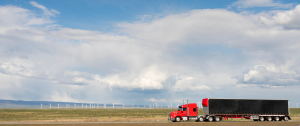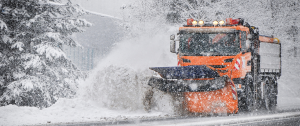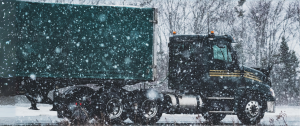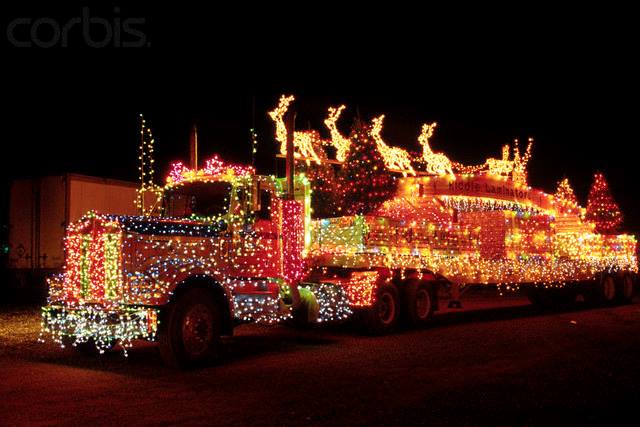
Are you a rookie truck driver starting out in the field and wondering which route type best fits your lifestyle and needs? Or are you a seasoned trucker looking to switch it up and earn a little higher on average pay as an OTR driver?
No matter your experience level or current position, there are many reasons to pursue a career as an over-the-road or OTR truck driver. However, like any job, it’s important to consider both the advantages and challenges before deciding if it’s the right path for you.
In this article you will find out what being an OTR trucker really entails, and the pros and cons of this profession.
What does an OTR trucker do?
Every driver entering the trucking industry has to first decide if they would rather drive locally, regionally, or over-the-road (OTR).
OTR trucking, also called long haul, involves transporting freight across state lines, and sometimes even national borders. OTR drivers handle various cargo types, including vehicles, consumer goods, machinery, construction materials, and food, and they can drive over hundreds of miles every day.
Owner Operators hauling OTR are typically paid by the load, a percentage of the revenue of the load, or a set amount of miles driven. Company drivers who choose to drive OTR are often paid by the mile, and compensation rates depend on carrier location, experience level, and freight type. However, since most OTR drivers complete more than 400 miles a day, this can really start to add up.
OTR drivers also have the freedom to decide whether to drive as a team or solo, although all drivers must comply with the FMCSA regulations on required driving breaks. Some carriers even allow drivers to bring along family members or furry friends to help avoid loneliness on the road.
Being behind the wheel for days, weeks, and even months at a time also means that OTR truckers must take advantage of the numerous truck stops across the nation. Many trucks include a sleeper cab, while showers, meals, and break time are often found at truck stops deisgned with lots of convenience items and services to accommodate the unique needs of truckers, such as Iowa 80.
OTR driving is often seen as a life of freedom, but there are still many factors to consider before trying it out for the first time.
What are the advantages?
The potential for higher pay. For many truckers, OTR driving stands out because of the opportunity to receive higher pay on average than other types of trucking due to longer routes and higher mileage covered. OTR truckers also often receive additional benefits and safety incentives that can increase their earning potential.
A chance to see the country. Long haul trucking enables drivers to explore different cities, states, and diverse landscapes. The open road offers a sense of freedom and adventure, and there’s no better way to explore than when you’re getting paid to do so.
Independence and flexibility. OTR truckers have more independence when creating and managing their daily schedules and routes, especially in comparison to local drivers. The limited supervision and increased autonomy are major benefits for drivers who prefer to set their own rules.
Job security. While last mile delivery and other local trucking jobs have been increasing in demand recently, there will always be a steady need for long haul transportation. With the ongoing driver shortage, experienced drivers will always be in demand.
Are there any challenges?
Long stretches away from home. The most difficult part of OTR trucking is being on the road and away from your loved ones for long periods of time. This means it’s important to find ways to remain connected, such as through video calls, virtual game nights, and planning ahead for time at home.
Long hours and loneliness. Spending long shifts on the road far from home can also bring feelings of loneliness and even depression. There are many strategies to combat mental health struggles, but it is important to be aware of the potential impact of the lack of social interaction and time away from loved ones.
No set schedule. While the flexibility of OTR trucking can be a perk, it can also be stressful to have an unpredictable routine. Depending on weather, traffic, and shipper requirements, OTR truckers often have to drive overnight or make last minute changes to a planned route.
Health and safety. Sitting for extended periods can cause health issues like obesity, back pain, and circulatory problems, which can be worsened when combined with an irregular sleep schedule. It is key for OTR truckers to take frequent breaks to get out and walk around, even if just for five minutes. Drivers should also focus on finding nutrient-rich, protein-packed meals, which can be found at truck stops and gas stations such as Love’s or Buc-ee’s.
Over-the-road trucking is a popular choice for drivers across the nation, but it’s important to consider both the pros and cons before deciding this is the right fit for you. If you’re looking for a direct comparison between pickup and delivery drivers and OTR, also called long-haul, read our article here.
For more information industry advice, safety tips, and career opportunities for truck drivers, be sure to check out our Truck Driver Blog or follow us on social media.












